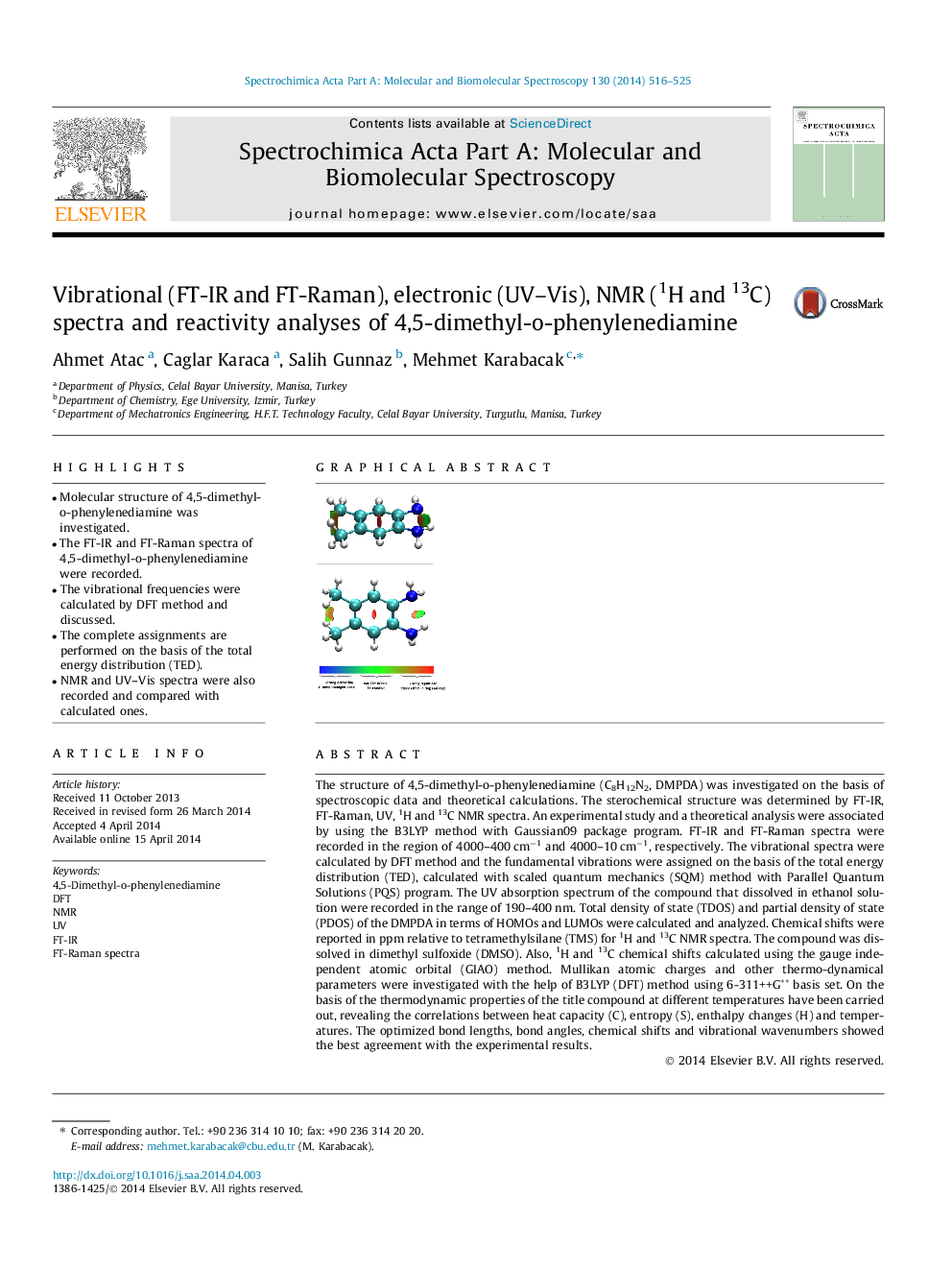| Article ID | Journal | Published Year | Pages | File Type |
|---|---|---|---|---|
| 1230382 | Spectrochimica Acta Part A: Molecular and Biomolecular Spectroscopy | 2014 | 10 Pages |
•Molecular structure of 4,5-dimethyl-o-phenylenediamine was investigated.•The FT-IR and FT-Raman spectra of 4,5-dimethyl-o-phenylenediamine were recorded.•The vibrational frequencies were calculated by DFT method and discussed.•The complete assignments are performed on the basis of the total energy distribution (TED).•NMR and UV–Vis spectra were also recorded and compared with calculated ones.
The structure of 4,5-dimethyl-o-phenylenediamine (C8H12N2, DMPDA) was investigated on the basis of spectroscopic data and theoretical calculations. The sterochemical structure was determined by FT-IR, FT-Raman, UV, 1H and 13C NMR spectra. An experimental study and a theoretical analysis were associated by using the B3LYP method with Gaussian09 package program. FT-IR and FT-Raman spectra were recorded in the region of 4000–400 cm−1 and 4000–10 cm−1, respectively. The vibrational spectra were calculated by DFT method and the fundamental vibrations were assigned on the basis of the total energy distribution (TED), calculated with scaled quantum mechanics (SQM) method with Parallel Quantum Solutions (PQS) program. The UV absorption spectrum of the compound that dissolved in ethanol solution were recorded in the range of 190–400 nm. Total density of state (TDOS) and partial density of state (PDOS) of the DMPDA in terms of HOMOs and LUMOs were calculated and analyzed. Chemical shifts were reported in ppm relative to tetramethylsilane (TMS) for 1H and 13C NMR spectra. The compound was dissolved in dimethyl sulfoxide (DMSO). Also, 1H and 13C chemical shifts calculated using the gauge independent atomic orbital (GIAO) method. Mullikan atomic charges and other thermo-dynamical parameters were investigated with the help of B3LYP (DFT) method using 6-311++G** basis set. On the basis of the thermodynamic properties of the title compound at different temperatures have been carried out, revealing the correlations between heat capacity (C), entropy (S), enthalpy changes (H) and temperatures. The optimized bond lengths, bond angles, chemical shifts and vibrational wavenumbers showed the best agreement with the experimental results.
Graphical abstractFigure optionsDownload full-size imageDownload as PowerPoint slide
